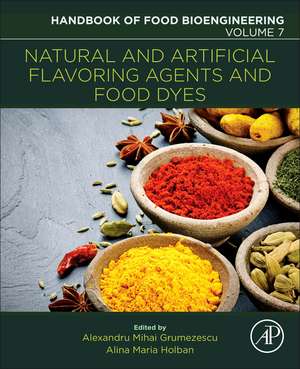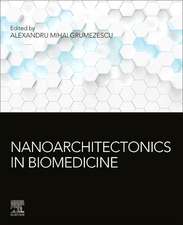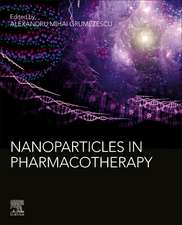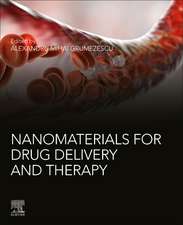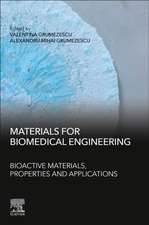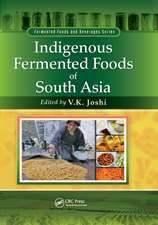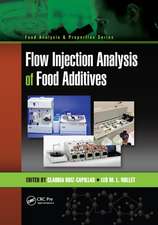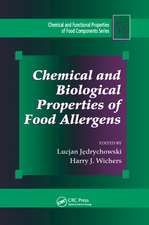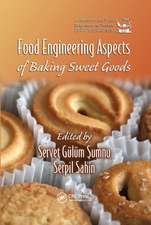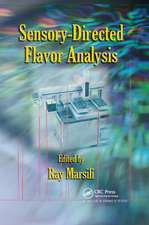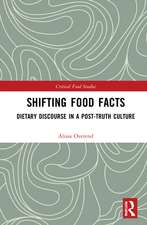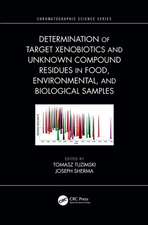Natural and Artificial Flavoring Agents and Food Dyes: Handbook of Food Bioengineering, cartea 7
Editat de Alexandru Mihai Grumezescu, Alina Maria Holbanen Limba Engleză Paperback – 18 sep 2017
- Explores the most common natural compounds and how to utilize them with cutting edge technologies
- Includes information on the purification and production processes under various conditions
- Presents the latest research to show benefits of using natural additives
Preț: 697.05 lei
Preț vechi: 969.81 lei
-28% Nou
Puncte Express: 1046
Preț estimativ în valută:
133.38€ • 145.34$ • 112.39£
133.38€ • 145.34$ • 112.39£
Carte tipărită la comandă
Livrare economică 16-30 aprilie
Preluare comenzi: 021 569.72.76
Specificații
ISBN-13: 9780128115183
ISBN-10: 0128115181
Pagini: 566
Dimensiuni: 191 x 235 x 32 mm
Editura: ELSEVIER SCIENCE
Seria Handbook of Food Bioengineering
ISBN-10: 0128115181
Pagini: 566
Dimensiuni: 191 x 235 x 32 mm
Editura: ELSEVIER SCIENCE
Seria Handbook of Food Bioengineering
Cuprins
1. Flavor and Coloring Agents: Health Risks and Potential Problems
2. Drying process of food: Fundamental aspects and mathematical modeling
3. Comparative Study of Natural and Artificial Flavoring agents and Dyes
4. Microbial pigments from bacteria, yeasts, fungi, and microalgae for the food and feed industries
5. Binding of food colorants to functional protein Hemoglobin
6. Non-conventional yeast-promoted biotransformation for the production of flavor compounds
7. Fruits: A source of polyphenols and health benefits
8. LC-MS/MS approach for the identification of unknown degradation products of dyes in beverages
9. Case studies in Food Chemistry
10. Turmeric: a review of its chemical composition, quality control, bioactivity, pharmaceutical application
11. A review of the botany, phytochemical and pharmacological properties of Galangal: greater galangal (Alpinia galanga (L.) Willd.) and lesser galangal (Alpinia officinarum Hance)
12. Coffee beverages and their aroma compounds
13. Lycopene: A Natural Red pigment
14. Microencapsulation of Color and Flavor in Confectionery Products
15. Advanced Natural Food Colorant Encapsulation Methods: Anthocyanin Plant Pigment
2. Drying process of food: Fundamental aspects and mathematical modeling
3. Comparative Study of Natural and Artificial Flavoring agents and Dyes
4. Microbial pigments from bacteria, yeasts, fungi, and microalgae for the food and feed industries
5. Binding of food colorants to functional protein Hemoglobin
6. Non-conventional yeast-promoted biotransformation for the production of flavor compounds
7. Fruits: A source of polyphenols and health benefits
8. LC-MS/MS approach for the identification of unknown degradation products of dyes in beverages
9. Case studies in Food Chemistry
10. Turmeric: a review of its chemical composition, quality control, bioactivity, pharmaceutical application
11. A review of the botany, phytochemical and pharmacological properties of Galangal: greater galangal (Alpinia galanga (L.) Willd.) and lesser galangal (Alpinia officinarum Hance)
12. Coffee beverages and their aroma compounds
13. Lycopene: A Natural Red pigment
14. Microencapsulation of Color and Flavor in Confectionery Products
15. Advanced Natural Food Colorant Encapsulation Methods: Anthocyanin Plant Pigment
